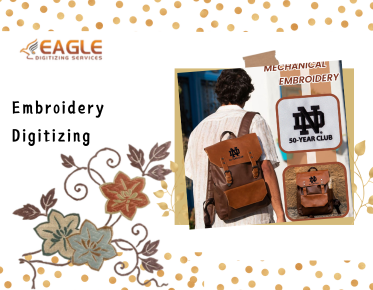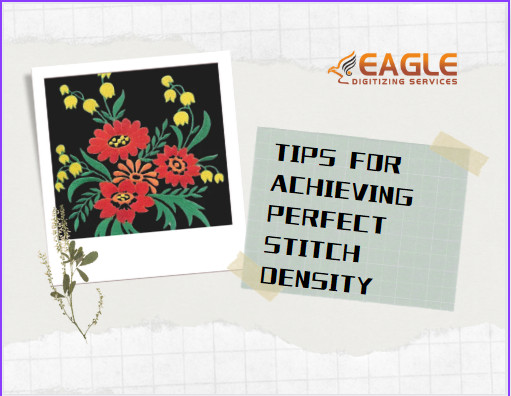Nail Embroidery Digitizing on Thin Fabrics with Ease
Welcome to the nuanced world of embroidery on thin fabrics, where delicacy meets precision. Embroidering on these lightweight materials presents unique challenges, but mastering these techniques can yield stunning, high-quality results. This guide will help you navigate the intricacies involved, ensuring your embroidery projects are both beautiful and professionally executed.
Why Thin Fabrics Require Special Attention
Thin fabrics, while elegant, require special attention due to their susceptibility to stretching, puckering, and distortion. The lightweight nature of these materials demands precise handling and appropriate techniques to maintain the integrity of the fabric and the embroidery design. Understanding these requirements is key to achieving flawless results.
Understanding Thin Fabrics
Common Types of Thin
Fabrics
Thin fabrics come in a variety of types, each
with its own characteristics. Common examples include chiffon, organza, tulle,
and silk. These materials are often chosen for their airy, translucent
qualities, making them popular for garments and decorative items. Each type
presents its own set of challenges in embroidery.
Characteristics and
Challenges of Thin Fabrics
Thin fabrics are characterized by their lightweight and delicate texture. They often have a tendency to stretch and shift, which can lead to issues such as puckering or misalignment during embroidery. The challenge lies in stabilizing these fabrics adequately without compromising their inherent properties.
Choosing the Right Thin Fabric
Selecting the Best
Fabric for Your Project
When selecting a thin fabric for your project,
consider factors such as drape, transparency, and purpose. Fabrics like silk
and satin offer a luxurious feel but can be slippery and prone to stretching.
Choose a fabric that aligns with the desired outcome of your project and the
type of embroidery you plan to use.
Pros and Cons of
Different Thin Fabrics
Each thin fabric has its own set of advantages
and drawbacks. For instance, chiffon is lightweight and airy but can be
challenging to handle due to its slipperiness. Organza provides structure but
can be prone to crumpling. Understanding these pros and cons helps you make an
informed choice that suits your project's needs.
Preparing Your Thin Fabric
Pre-washing and Ironing
Tips
Pre-washing thin fabrics is crucial to remove any
sizing or finishes that might affect embroidery. Use a gentle detergent and
avoid harsh chemicals. Iron the fabric on a low setting to remove wrinkles, but
be cautious to avoid overheating, which can cause damage or distortion.
How to Handle Delicate
Materials
Handling delicate materials requires a gentle touch. Use sharp, clean scissors for cutting to avoid fraying. When working with these fabrics, use a lightweight touch and avoid pulling or stretching to maintain the fabric’s integrity.
Selecting the Right Stabilizer
Why Stabilizers are
Crucial for Thin Fabrics
Stabilizers are essential for supporting thin
fabrics during the embroidery process. They help prevent stretching, puckering,
and distortion, ensuring that the design maintains its intended shape and
appearance. Choosing the right stabilizer is critical for achieving a
professional finish.
Types of Stabilizers:
Cut-away, Tear-away, and Wash-away
Different stabilizers serve various purposes:
●
Cut-away stabilizers
offer substantial support and are ideal for fabrics that require heavy
stabilizing.
●
Tear-away stabilizers are
used for lighter designs and are removed by tearing away after embroidery.
● Wash-away stabilizers dissolve in water, making them suitable for delicate fabrics that cannot tolerate other stabilizers.
Hooping Techniques for Thin Fabrics
Tips for Proper Hooping
Proper hooping is vital to ensure that the fabric
remains taut and properly aligned. Use a hoop that fits snugly around your
design area and ensure the fabric is evenly stretched without wrinkles. Secure
the fabric in place gently to avoid distorting the material.
Avoiding Hoop Burn and
Distortion
Hoop burn and distortion can occur if the fabric is too tightly stretched or if the hoop is not aligned correctly. To avoid this, use a soft backing or a protective layer between the hoop and the fabric. Adjust the hoop tension to be firm but not overly tight.
Design Considerations for Thin Fabrics
Simplifying Complex
Designs
For thin fabrics, simplify complex designs to
reduce the risk of distortion and puckering. Opt for cleaner lines and fewer
intricate details to ensure that the design stitches out smoothly. Simplified
designs are also easier to manage and adjust during the embroidery process.
Adjusting Density and
Stitch Types
Adjust the stitch density and types to suit thin fabrics. Use lighter densities to prevent the fabric from becoming too stiff or distorted. Choose stitches that complement the fabric's texture, such as lightweight fill stitches or delicate running stitches.
Choosing the Right Stitches
Light-Fill Stitches for
Thin Fabrics
Light-fill stitches are ideal for adding color
and texture to thin fabrics without overwhelming them. These stitches provide
coverage while maintaining the fabric’s flexibility. Opt for lighter fill
patterns to ensure the fabric retains its drape and softness.
Using Running Stitches
for Delicate Designs
Running stitches are perfect for delicate designs
on thin fabrics. They create a subtle and elegant look, suitable for fine
details and text. Running stitches are less likely to cause puckering or
distortion, making them a good choice for intricate embroidery.
Thread Selection
Best Threads for Thin
Fabrics
Choose threads that complement the delicacy of
thin fabrics. Fine, high-quality threads like rayon or polyester work well,
providing a smooth finish without adding bulk. Avoid using thick or heavy
threads that can cause strain on the fabric.
Avoiding Thread Breakage
and Shredding
To prevent thread breakage and shredding, ensure your thread tension is correctly adjusted and use high-quality threads. Regularly clean your machine to remove lint and debris that can cause issues. Additionally, use the correct needle type for your chosen thread.
Managing Fabric Stretch
Techniques to Prevent
Fabric Stretching
Prevent fabric stretching by using a stabilizer
and handling the fabric gently. Avoid pulling or tugging on the fabric during
the embroidery process. Use lightweight adhesives or fabric tapes to secure the
fabric and prevent it from shifting.
Using Temporary
Adhesives and Tapes
Temporary adhesives and tapes can help manage
fabric movement and stretching. Apply these products to hold the fabric in
place without causing damage. Ensure that the adhesives are compatible with
your fabric and can be easily removed after stitching.
Digitizing for Stability
Reinforcing Edges and
Outlines
Reinforce edges and outlines in your design to
provide extra stability. Use satin stitches or additional layers to strengthen
the design's boundaries, which helps prevent distortion and keeps the
embroidery looking crisp.
Minimizing Pull and
Puckering
Minimize pull and puckering by carefully
adjusting the digitizing settings. Choose appropriate stitch densities and
avoid overly complex designs. Properly test and adjust your design to ensure it
maintains its shape and appearance on thin fabrics.
Layering and Sequencing
Proper Layering
Techniques
Layering techniques are essential for managing
complex designs and ensuring proper stitching. Organize your design elements in
layers, starting with the base and building up to finer details. This approach
helps manage stitch order and prevents overlapping issues.
Sequencing Stitches to
Reduce Shifting
Sequence your stitches to reduce fabric shifting and maintain alignment. Plan the stitching order to minimize movement and ensure that the design remains centered and in place throughout the embroidery process.
Previewing Your Design
Using Software Previews
Utilize software previews to visualize how your
design will appear when stitched. This tool allows you to see potential issues
and make adjustments before actual embroidery. It’s a valuable step to ensure
the design translates well to the fabric.
Making Adjustments
Before Stitching
Make necessary adjustments based on the software
preview. Modify stitch densities, placements, or design elements as needed.
Ensuring all adjustments are made before stitching can save time and prevent
costly mistakes.
Setting Up Your Embroidery Machine
Machine Settings for
Thin Fabrics
Adjust your embroidery machine settings to
accommodate thin fabrics. This includes setting the correct stitch tension,
adjusting the hoop size, and selecting the appropriate needle. Proper machine
setup is crucial for achieving optimal results.
Tips for Smooth
Operation
For smooth operation, regularly clean and
maintain your embroidery machine. Ensure that the needle and thread are
compatible with your fabric and settings. Monitor the stitching process to
catch and correct any issues early.
Running a Test Stitch
Importance of Test Runs
Running a test stitch is essential to verify the
design’s appearance and functionality on the actual fabric. Test runs help
identify potential issues and allow for adjustments before proceeding with the
final embroidery.
Analyzing and Adjusting
Your Test Results
Analyze the results of your test stitch for any signs of distortion, puckering, or misalignment. Make necessary adjustments to the design or machine settings based on your observations. Testing guarantees that the result matches your expectations.
Troubleshooting Common Issues
Fixing Puckering and
Distortion
Puckering and distortion can often be fixed by
adjusting the stitch tension and using appropriate stabilizers. Ensure the
fabric is properly hooped and handled gently to avoid these issues. Make
changes to the design or settings as necessary.
Dealing with Thread
Breaks and Tension Problems
Address thread breaks and tension problems by checking the machine settings and thread quality. Ensure the thread is correctly threaded and the tension is properly adjusted. Regular machine maintenance can also help prevent these issues.
Finishing Techniques
Trimming and Cleaning Up
Your Embroidery
Trim excess threads and clean up your embroidered
badge carefully. Use small, sharp scissors to avoid damaging the fabric. Ensure
that the embroidery is neat and free of any loose threads or stabilizer
remnants.
Removing Stabilizer
Without Damaging the Fabric
Remove the stabilizer gently to avoid damaging the thin fabric. If using a tear-away stabilizer, carefully tear away from the design. For wash-away stabilizers, follow the manufacturer’s instructions to dissolve and rinse away the stabilizer.
Caring for Embroidered Thin Fabrics
Washing and Ironing Tips
Use mild detergent to wash embroidered thin
fabrics by hand or on a gentle cycle. Iron on a low setting, placing a
protective cloth between the iron and the fabric to prevent damage. Handle with
care to maintain the quality of the fabric and the embroidery.
Storing Your Embroidered
Items
Store embroidered thin fabrics in a cool, dry place away from direct sunlight. Use acid-free tissue paper or fabric storage bags to prevent dust and damage. Proper storage ensures that your embroidered items remain in excellent condition.
Embroidery on thin fabrics requires careful
consideration of fabric characteristics, appropriate techniques, and precise
handling. From choosing the right materials to troubleshooting common issues,
each step plays a crucial role in achieving beautiful results. Mastering these
techniques enhances your ability to create stunning, high-quality embroidery.
Continue to experiment and innovate with your
embroidery projects. Embrace new techniques, explore different fabrics, and
push the boundaries of your creativity. With practice and dedication, you’ll
achieve remarkable results and elevate your embroidery skills.



